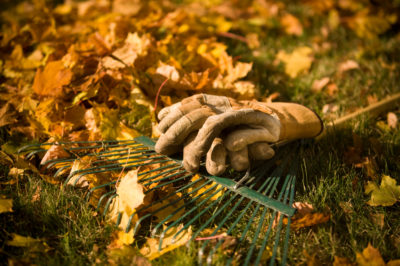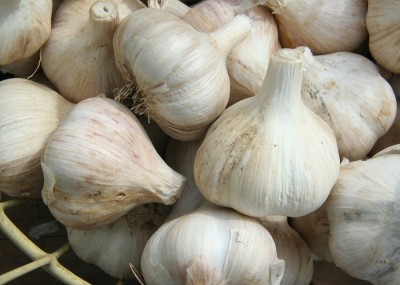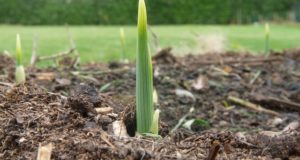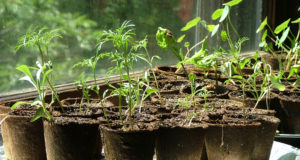 Summer may be the peak of gardening, but cool, colorful fall can bring its own delicious harvest to your dinner table. The cooler, often rainy days of autumn give gardeners a second chance to harvest cool weather crops such as snow peas, lettuce, kale and turnips. While many autumn crops must be planted mid-summer in order to give a harvest before the first frost, there are several quick-growing vegetables that you still have time to plant.
Summer may be the peak of gardening, but cool, colorful fall can bring its own delicious harvest to your dinner table. The cooler, often rainy days of autumn give gardeners a second chance to harvest cool weather crops such as snow peas, lettuce, kale and turnips. While many autumn crops must be planted mid-summer in order to give a harvest before the first frost, there are several quick-growing vegetables that you still have time to plant.
Regardless of whether you plan on planting for a fall garden, there is still plenty of work for the home vegetable gardener to do in the fall to ensure that your garden is at its best for next year’s growing season.
Planting for the Fall
Do you want to know what you still have time to plant? Here is a tip: Find out when your area’s first frost date is. Then look at what you might like to plant and see how long the estimated maturity date is. Now add two weeks. The reason we have to add two weeks is because during the fall the days are getting shorter and therefore your vegetables will receive less sunlight and grow more slowly. So if your usual first frost date is October 30th and you want to plant a crop that takes 25 days to mature, you will need to plant it by September 21st.
Some plants that grow quickly include arugula, spinach, turnips and Asian greens. Remember to put down a good compost before you plant, because many of these are heavy feeders.
Planting for Next Year
Most vegetables are planted in the same growing season that you plan to harvest them. But one notable exception is garlic. Garlic cloves should be planted pointy side up after the weather starts to cool, usually sometime in October.
New Natural Fertilizer Doubles Garden Production!
Garlic is by far one of the easiest crops to plant and grow and if you plant one of the hard-neck varieties, you get to have not one, but two harvests. In the spring, you get delicious and tender garlic scapes and by mid to late summer, you can harvest the flavorful bulbs.
Garden Care
When plants are young it is especially important to ensure that they receive enough water and are protected from pests. One inch of water each week is a good guideline for most vegetables, and a good watering every week is better than several lighter ones.
Pests and weeds can also be prolific during the fall. Remember to be diligent in watching for and dealing with these problems as soon as you notice them.
Extend Your Growing Season
 Many fall vegetables will tolerate a light frost but not a hard frost. In order to extend your growing season, and therefore the amount of vegetables you can harvest during the fall, you should protect vegetables with an old sheet or blanket if you suspect that you might get an early, overnight frost.
Many fall vegetables will tolerate a light frost but not a hard frost. In order to extend your growing season, and therefore the amount of vegetables you can harvest during the fall, you should protect vegetables with an old sheet or blanket if you suspect that you might get an early, overnight frost.
Plant The ‘Garlic Sampler’ This Fall!
You can also use cold frames to protect tender plants and to extend your growing period well beyond your first frost.
Fall Cleaning
Besides any additional planting and harvesting that you intend to do before the first frost, it is a good idea to get a head start for your spring planting. One of the easiest ways to do this is to perform a little “fall cleaning.”
Start by pulling up any old annuals and vines and put them in the compost. (Remember to harvest those green tomatoes and peppers first, though, which can be used green or saved to ripen indoors). Cleaning out dead and dying plants isn’t just to make your garden look nicer – it helps to prevent build-up of disease-causing bacteria and destructive insects.
Cover Up
According to some gardeners, it is best to have a cover crop during the winter because bare tip soil is more quickly eroded. Cover crops are planted to keep the soil in place over the winter. Some cover crops can be tilled under in the spring in order to add nutrients to the soil just in time for your spring plantings.
Good choices for cover crops include legumes, buckwheat, rye, red clover and turnips. If you do go with clover, just make sure that it is red clover as the other varieties can be difficult to get rid of.
When fall arrives, it can be a bittersweet time for the home vegetable gardener. Their gardens can be just as bountiful as they were in the summer – or almost anyway, but it is also a signal that winter is on the way and for at least a few months, and we won’t have that “happy place.” But still, fall can be a fun time to garden, because it is that last big push to plant and harvest those extra vegetables as well as a time to plan for spring.
What do you plant in the fall? Do you have any tips? Tell us in the section below:
 Off The Grid News Better Ideas For Off The Grid Living
Off The Grid News Better Ideas For Off The Grid Living




